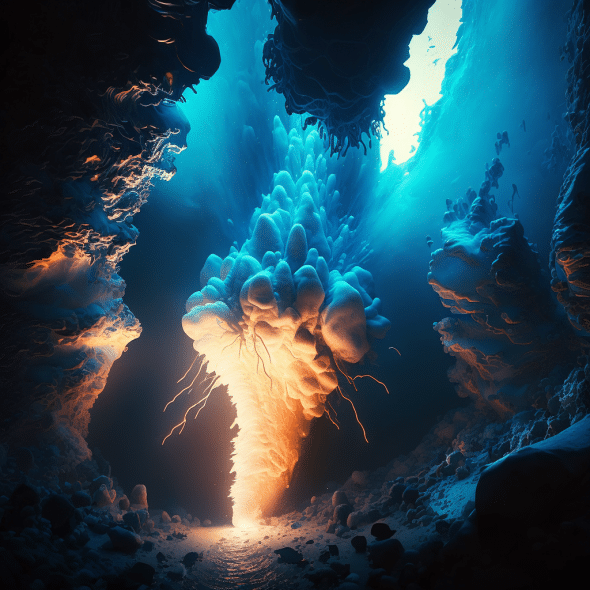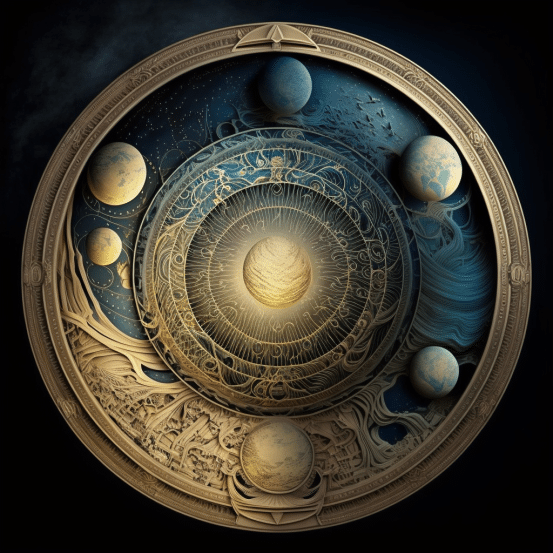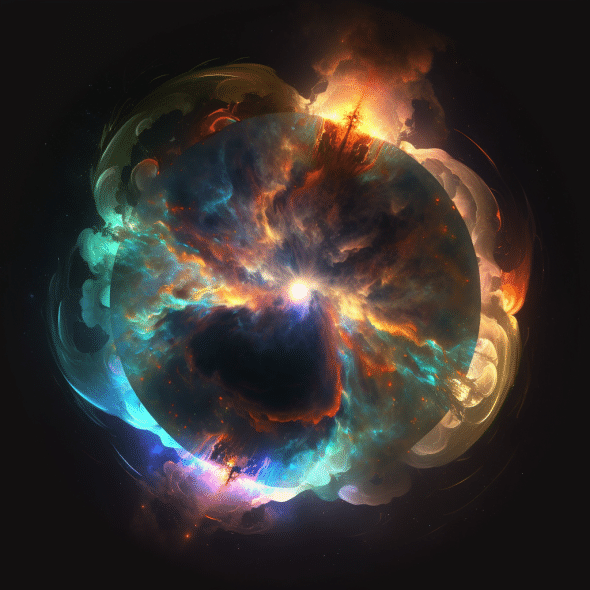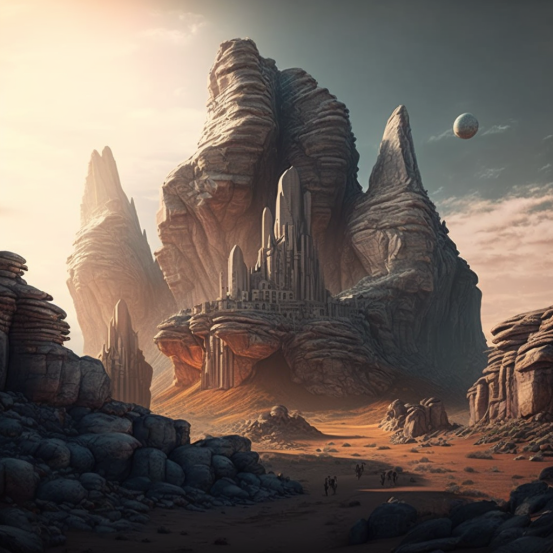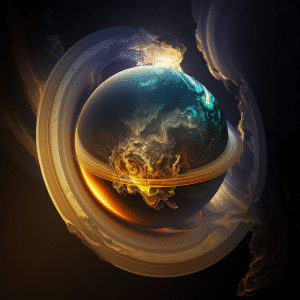Cantoss, the first of the Very Far Fekxtah
Mean Distance from Oma: 3,884 WA
Orbital Period around Oma: 336 years, elliptical, 90 degrees to plane
Mean Diameter: 9,885 miles
Length of day: 17 hours
Gravity: 4.4 Ethems
Description:
The Fekxtah planet Cantoss is the first, the innermost, of what the ancient Elzheni texts call the Very Far Fekxtah. They are called this for the simple reason that they are extremely far from our sun, Oma, and, therefore, from our own home world, Ethem.
The ancient Elzheni texts describe Cantoss as a world of earth and water. What they meant by this is that the planet comprises layers of earth and stone interleaved with layers and oceans. The surface of Cantoss is a huge land mass with a number of large, shallow oceans, and it is extremely cold given that it is directly exposed to the emptiness of space. Cantoss has little atmosphere to speak of. Of course, at this remarkably low temperature the oceans and lakes of Cantoss are not made of water. That would be frozen as hard as rock in this environment. There are instead made of a substance that the ancient Elzheni called “Desslenelt”. It is a material not found on our own Ethem or on any of the inner worlds. If it were, though, it would immediately turn into a gas because of the difference in temperature.
Beneath the thick surface layer of the planet there are three individual layers of liquid with layers of earth (or stone) between each. We will describe each in separate sections below.
The core of Cantoss is hot and fiery and the Elzheni believed it to be made up of either molten rock perpetually spinning to generate its heat or that one or more celestial beings are trapped, embedded in the very core of the Fekxtah. It was surprising to our current scholars that a race of beings as intelligent and as scientifically minded as the Elzehni would put credibility in the latter belief since that seems closer to religion than to science. Regardless, we simply convey the major points of the ancient texts for educational purposes without making judgements as to their correctness or fitness.
As one moves further away from the molten core of Cantoss, the extreme heat lessens and eventually cools allowing the earth and stone to become solid though it does remain pockmarked with many volcanic outlets where the core’s heat manages to rise through cracks in this material. Some of the outlets are quite large (as large as a mountain here on Ethem), and others are quite small, no bigger than the well-ventilated crawl space at the base of a fine home. The layer that contains these hot geysers is encased by a great ocean, hundreds of miles thick. At its top, the points farthest from Cantoss’ core, the liquid becomes slushy and eventually quite solid forming another of Cantoss’ layers with earth and stone lying at the top of this layer.
Another layer of liquid follows this layer of solid, which is again followed by a layer of solid, and then yet one more layer of liquid the top of which touches the bottommost part of Cantoss’ surface layer.
In this manner Cantoss has three distinct layers of ocean each of which surrounds the entire planet. Each layer contains its own ecosystem which is home to many living beings, and every layer is distinct from the others.
The three ocean layers are described in greater detail below.
The Hyless Ocean
The topmost of the three layers of ocean within Cantoss is called the Hyless Ocean. It is the coolest of the three as it is closest to the surface of the planet and is furthest from Cantoss’ hot core. It contains an abundance of life in two forms. The first of these is a race of creatures that the Elzheni called the Hyless, for which this ocean layer of Cantoss is named. The Hyless are gigantic creatures made from a thick organic slime. They move slowly and deliberately around the full extent of the planet. They survive by consuming a thick, gooey brine that grows in large patches on the bottom of this ocean, and, it should be noted, they feed on each other. The ancient texts say that it is unclear if one creature actually devours another or if they simply merge with each other going from two large creatures to one single, much larger, one. The texts also mention that these creatures have seasons of growth, but also seasons of shrinkage. Over time these creatures become ever larger, and at the appropriate season each of the truly gigantic creatures will begin to vibrate quite violently and will eventually shake themselves apart, or simply explode, into ten of thousands (or perhaps more) smaller versions of themselves which then begin the cycle again.
The Hyless have a stiff outer shell that provides a barrier between the ocean’s liquid and their own inner body. Their inner bodies contain a plethora of hand-sized “organs” that travel throughout the Hyless repairing parts that are ailing or broken and giving the large creature some semblance of intelligence, though perhaps not enough for actual sentience.
The Ocean of Lights
In this hidden ocean deep beneath the surface of Cantoss lies one of the most spectacular sights in Oma’s Solar System, if one could only see it, which the ancient Elzheni claim to have done. This layer contains countless numbers of luminescent water-bound creatures. Most are almost completely transparent, but all of them emit lights into the dark ocean, and every light seems completely unique in its color, its luminosity, and the frequency of its bursts. Some are constantly lit and one can watch as they move throughout the watery world. Others blink intermittently or only under specific circumstances, or in reaction to events such as being threatened by their neighbors.
These creatures feed on each other and on an abundant life form that grows from the rocky bottom of this ocean. These creatures, known to the Elzehni as Farddissil, are thick, smooth stems that can grow to be as much as a mile high, supported by the thick fluid of the ocean. Many of these have at their top a soft light that mimics that kind of fishy creatures that live in the ocean. This is an elegant disguise, and a highly efficient method for capturing, and devouring, its fellow inhabitants of this watery world.
The Red Ocean and The Civilization of the Gollanir
The bottom-most of Cantoss’ three ocean layers is called the Red Ocean because of the red hue of its water and the vast number of volcanic chimneys that line the bottom of its extent. These chimneys are constantly spewing fiery detritus from the earth and stone layer that lies immediately underneath the Red Ocean which is closest to Cantoss’ molten core.
This ocean is quite warm and because of this it is made of liquid water. The water is warm throughout and the parts near the volcanic chimneys are boiling.
The warmth of this layer and the richness of the earth that encases it both above and below, have given rise to many intelligent life forms, and one in particular that has excelled all others that was known to the Elzheni as the Gollanir.
The Gollanir will be described in greater detail in a subsequent chapter of this document. Here we will state that this race of creatures had developed a very powerful science of their own based on the Six Energies, and on Physic Energy in particular. Their master of Physic Energy gave them great power that allowed them to create a civilization that spanned the layers of ocean of their own world and it gave them the ability to extend their reach to the Fekxtah that lie further from Oma. The Elzheni discovered that the Gollanir were a very old civilization, older than any of the races on Ethem, and that they likely had dominated this part of the Solar System for tens of thousands of years. They had created alliances with other races on other Fekxtah, and so the Elzheni were careful in their efforts to establish, and maintain, a close friendship with this Civilization and its many members.
Fekxtah Station #12:
This Fekxtah Station is unique among all other stations in that it served as both a station from which exploration could be made, but it was primarily a diplomatic outpost where the Elzheni could maintain and extend their relationship with the Gollanir.
The station was built on the surface of Cantoss. Originally, it was small, holding only a few dozen Astronomers, but once the Gollanir contacted the Elzheni the station was built into a much larger structure, much of it with the help of the Gollanir.

